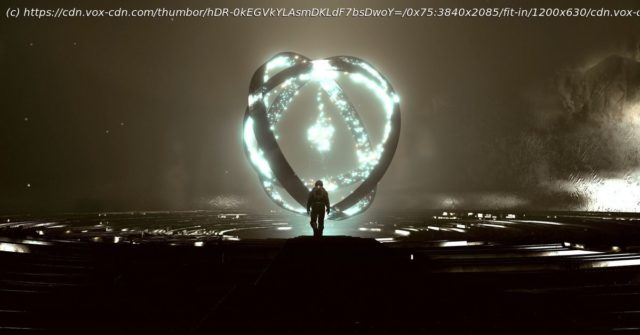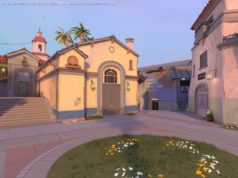Starfield releases on Windows PC and Xbox on Sept. 6, but Bethesda is finally ready to talk about the main quest story in a new interview with Emil Pagliarulo.
In the five years since Bethesda Softworks first announced Starfield, much of the conversation has been focused on the endless possibilities that await players within the game’s web of planets and choices. There’s complex character and personality creation, a spectrum of geography all tricked out with the latest lighting and physics technology, customizable spaceships and space teams from highly dimensional NPCs, and loads of other bells and whistles to take advantage of the current generation of consoles.
One thing that’s not as foregrounded in the buildup to Bethesda’s next big thing: the narrative that will carry players through this newly created world. A few weeks before the game’s Sept. 6 launch, Polygon editor Owen Good spoke to Starfield lead designer Emil Pagliarulo, a veteran of the studio whose resume includes The Elder Scrolls 5: Skyrim and Fallout games, about constructing a universe — full of history and ideologically driven populations — from the ground up. Pagliarulo and the Bethesda team aimed to ask bigger questions than most science fiction games of its ilk. Here’s how.
[Ed. note: This interview has been edited and condensed for clarity.]
Polygon: You embarked on a hell of a creative journey by developing an entirely new IP, so how do you begin on something like that? You have trusted people around you, you have structure that you can lean on, but when you get the call of “We’re doing sci-fi and have to make it all up” — was it intimidating?
Emil Pagliarulo: No, it wasn’t, it was exciting. The scale of the project hadn’t hit me at the time. It really was just like the beginning of a Fallout game or working on Elder Scrolls stuff — it was fun. The very beginning was [game director] Todd Howard and [lead artist] Istvan Pely and myself, Istvan on the art side, me on the design side, Todd putting everything together, having conversations that we had just like we would about Fallout. There was excitement of building on new IP and where we could go and what we could do.
What seems intimidating is not always that there are too many cooks in the kitchen, but many separate kitchens. What were the narrative responsibilities? How was Todd involved?
Basically, it was up to me to create the lore. Todd had the game idea, and I would create the lore. And every time I would create it, I would pass it through Todd.
For example, the United Colonies as a faction. That starts with conversations with Todd: All right, cool, what do we want the big factions to be? I was thinking this. So like the United faction is Battlestar Galactica, Starfleet, the structured society, military-type of stuff, for that sort of power fantasy, that sort of vibe. So we would talk, we’d agree, and then I would go off and go find a name for that — the United Colonies was one of them, and there are others on a list. A lot of the work early on goes back and forth through email! When we signed off on “the United Colonies,” I would start the process for building up the lore from the ground up.
But to go a little further on that, with games like Fallout 3 and Fallout 4, you have established canon and creative expectations set from people that you work with. Here, you’re innovating with two purposes: One is to establish lore, and then the other is applying a personal story. How does the lore of Starfield become the story of Starfield?
The story of Starfield, as opposed to the lore… So there’s the main quest, and one of the things that Todd and Istvan and I talked about early on was: We are making a video game, there’s gonna be a main quest, but we really want to dig into the sort of the kind of high-level stuff with exploring space, the more theological aspects of it.
We talked a lot about religion, and we ended up making up two religions for the game. All the existing religions are still there in the world, in the universe, but we focus on the two new ones because those two religions accentuate the vibe of theology in the game. So there’s the Sanctum Universum, and they’re sort of the church where they believe that humans going through space and being able to explore the universe is a sign that God exists, and God wants us to be closer to him. And then there’s the Enlightened, basically an atheist church. They’re humanists, they’re just like, There’s nothing theological about this. And so we would have a lot of talks on our own journeys, our own theology. You know, what is out there? We were really inspired by things like 2001: A Space Odyssey or Contact or Interstellar, these really sort of heady sci-fi concepts.
[Religion] was a way to talk about these big concepts but not dive too far down the rabbit hole — you don’t want to offend people. We actually had Shane Liesegang, who was one of our writers [on Skyrim and Fallout 4]… He’s now studying to be a Jesuit priest. We talked to him about: If we were to make this real, this religion, what would we do? How would we write it? And so he advised us and did some writing for us, he wrote for the Sanctum Universum, and it really grounded it in the believable.
I’ve heard you talk about how the Dark Brotherhood in Skyrim was sort of a take on Catholicism, which makes sense to me since you were raised in the slightly Catholic city of Boston. So does this grappling with religion feel like a personal expression in Starfield? Poking that snake in something where you’re basically expected to be scientific and objective, and you’ve decided to go into metaphysical direction?
I think people know about the science and it’s really about asking: Why do we want to go into space? What do we hope to find? You know, William Shatner, Captain Kirk himself, went into space and came back and says, “It was terrifying. There’s nothing out there.” That makes you think.
Todd and I both grew up in religious settings. I grew up Catholic, obviously, but I think [Starfield] has more to do with where I’m at in my life now. I’ve flip-flopped from agnostic to atheist probably five times in the course of making this game.
Домой
United States
USA — software Starfield lead designer Emil Pagliarulo says you may find God in Starfield...






